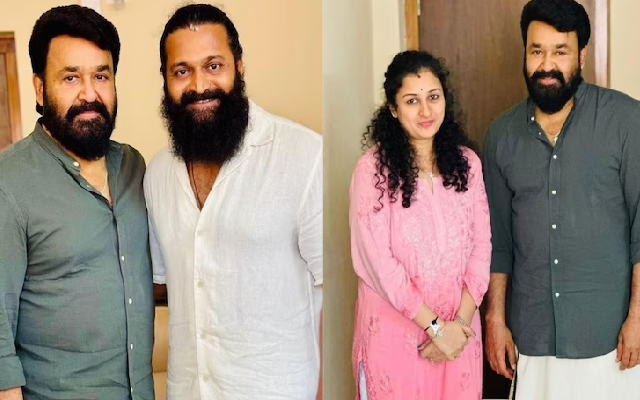Of the 67 years of post-independence India the Indian National Congress has ruled the country for 55 years. During this period it has occupied an ideologically centrist space tolerating plurality and democratic contestation. Though, it would prefer to assume the mantle of secularism, in real practice, it has employed caste and communal politics to consolidate its position in electoral terms. However, having nose-dived to its tally of seats in the 2014 parliamentary elections, when compared to its past achievements, the weaknesses of the party in competitive politics have come to the fore clearly.  Congress party’s current identity crisis is articulated by writer Suhas Palshikar (in Economic & Political Weekly EPW may 9, 2015) thus: “To wit, today’s Congress itself may not know what it is. It talks of Gandhi–Nehru–Gandhi as icons but rarely manages to clarify to itself and to its fast dwindling followers what it stands for in today’s context”. This lack or failure in self-understanding is evident in how Congress has been behaving and framing or failing to frame its identity and what it stands for in the Hindutva infested, communally defined India of ‘development’ dangling Prime Minister Narendra Modi.
Congress party’s current identity crisis is articulated by writer Suhas Palshikar (in Economic & Political Weekly EPW may 9, 2015) thus: “To wit, today’s Congress itself may not know what it is. It talks of Gandhi–Nehru–Gandhi as icons but rarely manages to clarify to itself and to its fast dwindling followers what it stands for in today’s context”. This lack or failure in self-understanding is evident in how Congress has been behaving and framing or failing to frame its identity and what it stands for in the Hindutva infested, communally defined India of ‘development’ dangling Prime Minister Narendra Modi.
Today’s Congress: A party that has failed to articulate an identity
The Congress’ long rule in India was largely a product of pre-independence mobilisations and for most of the last seven decades, a lack of pan-India level political parties who could compete with Congress politically.
Given the vicious politics of Hindu Mahasabha and its being forced into limbo due to its role in the murder of Gandhi, Congress under Nehru could harvest the public anger and the idealism of post-Independence days. Besides being a strong and articulate leader with a clear vision, he also possessed a clear ideology. His commitment to socialist model of development had managed to restrict the presence of Communist parties mostly to certain pockets of the country. This approach was directed at all sections of society transcending caste, religion or region.
Indira Gandhi, through her Land Reforms and green revolution, had managed to win over the agrarian classes, at a time when most of the Indian rural areas, due to the poor penetration of the media, were hardly exposed to counter discourses. However, the party organisation was largely built on the whims of her choice.
Rajiv Gandhi’s landslide victory was due to a sympathy wave following Indira Gandhi’s murder rather than due to his party’s organisational strength, while the later survival of Congress as a ruling party was purely due to circumstances.
Congress’ most recent decade of rule was more due to Indian’s thrusting power on it rather than due to its ideological, social or leadership abilities.
During this period, the rise of identity politics and leaders rising from various identity groups had sapped the Congress off its disparate but critical vote share. Having embraced economic liberalism but not having changed its archaic politics of caste and communal triangulation, it has become a party of no one.
After analysing the history of long decline of the Congress in the EPW (May 9, 2015), Suhas Palshikar concludes that “rejuvenation of the Congress is going to be an uphill task. Following 2014, survival itself is at stake”. The key reason the author sites is that despite the continuing availability of geographic space for the Party, what it lacks is socio-political space.
Geographic presence refers to states where the Congress continues to have a substantial percentage of vote share. In some of them it still rules or is the principal opposition. And yet, the votes for the Congress come from a “residual manner” as the author describes. These residual votes are from the traditional voters and voters who are less exposed to the media. But what is clear is that in its current avatar, no particular social section owns up to the Congress party: neither dalits, nor Adivasis, nor Muslims. The party does not appear to exhibit any social character or identity. In Palshikar’s words: “The Congress today is neither a party of the poor and lower classes nor is it a party of the middle classes”. So what is Congress today? What is it good for?
A Party used but not owned
Given its loathing for inner party democratic organisation, Congress has continued, in a feudal mode. As the Gandhi family has remained its inevitable rallying point, all the other functionaries are chosen mostly by the whims of the family or the coterie that surrounds the family.
The coterie are loyalists who play a pivotal role in deciding state and district level leadership and organisational functioning. Given that favouritism and corruption are the chief deciding factors, there is no way any new and talented leader can ever emerge or would be allowed to emerge under the current set up. Even the attempts by Rahul Gandhi to introduce inner party democracy are scuttled at every step by the ‘old’ coterie.
As a result, the Congress continues to remain a milch cow for many who can cultivate the right contacts within the party (Other parties also operate in a similar manner). All in all, it has become a party to use and discard as and when one can, just as Sharad Pawar did prior to 2014 elections.
At every level, jaded, feudal and archaic minds dominate while ‘pimps’ and power brokers have a field day. Such an organisational structure neither inspires confidence nor offers the young any hope of a future in such a system. Neither the leadership nor the image of the party today has the ability to inspire party workers to do the leg work required in this era of competitive politics.
A Party that lacks a leader
The image of a projected leader plays a very important role in traditional parliamentary systems of government. In a world of Hollywood and Bollywood heroes rescuing the ‘world’ from ‘apocalypse’ most voters endorse a leader rather than a party.
In the Indian context, if one considers Tamilnadu, Andrapradesh, Orissa, Gujarat and many other states, one can observe how it is the image of the leader that generates political support for the party. Many of these parties are mere extensions of their leaders. Congress was no exception to this rule. Nehru and Indira were leaders who, despite the weaknesses in party organisation, could manage to attract voter support. Such leadership is not available anymore or was never cultivated anyway.
This is even more evident in 2014 elections. When Modi was presented by the BJP as a strong leader as early as in 2013, the Congress hardly managed to present its Prime Ministerial candidate. Rahul Gandhi, if the Congress intended at all as a candidate, was ambiguous to the voter till the end. Moreover, Rahul, having not taken any role in government, but all along making his ubiquitous presence felt in government, had nothing to show for his abilities as a leader, but had everything to shoulder from his corruption tainted government. This situation was made worse by his standing along or beside his mother as an obedient son rather than as an independent thinking assertive leader. In contrast to the claimed 52 inch chest of Modi, every image that one came across of Rahul Gandhi appeared to be effeminate. His entire body language lacked assertiveness. The biggest casualty was and is Rahul’s complete lack of ability to engage language imaginatively. Therefore, given its dynastic politics, when Rahul cannot inspire people to vote, the efforts of the rest of the party stalwarts hardly ever matters. If the leader does not inspire through his body language, the party workers lose confidence. The situation has not changed even after the election defeat. Rahul has remained a character frozen in time, and his image had further deteriorated in the mind of the voter owing to the continuous assault by Hindtuva’s social media hate brigade. Rahul and Congress are left with hardly any defenders. It is because no one owns Congress.
Can the Congress survive?
When Congress, due to the needs of Indian economic situation, had to embrace policies of economic liberalisation, it had to jettison its key ideological frameworks bequeathed by Nehru’s socialism and later Indira Gandhi’s populism.
During the last decade of its rule it had to embrace capitalism with its naked ambitions. This period of economic liberalisation has been a period of considerable economic growth for the nation. But due to the reach of the media, education and increased democratic participation, this capitalist beast has also unleashed unlimited ambition and desire for economic betterment among Indians.
However, despite its primary role in unleashing the economic development, and despite being instrumental in reducing poverty considerably, Congress has failed to articulate what good it has done to the nation over the last three decades. It has lacked a language and an argument to frame its achievements. But the more serious problem the party has been suffering is “the near-total absence of organisation and the leadership crisis”.
The Party’s weaknesses stem from its clear lack of ownership by any social group, sycophantic manner of its functioning from top to the bottom of its organisation and its sheer failure to address the issue of leadership. With the embrace of globalisation Congress has jettisoned its socialist identity and, hence, lacks a language to address a populace that has moved on from Congress’ traditional ‘for all and for none’approach.
In practical terms, it lacks a credible political programme that can attract any specific social section. Why did that happen? Can’t those who benefitted from the Congress policies realise it? Why don’t they vote for Congress?
People vote for identity not for self interest
An answer to the above question can be found in George Lakoff’s observation. Analysing why left leaning progressive politics fails where Conservatives (in US context) win the argument Lakoff, a political thinker, observes that “people do not necessarily vote in their self-interest. They vote for their identity. They vote for their values. They vote for who they identify with”.
This is precisely what happened in 2014. People identified with Modi as a symbol of their own aspiring, hard-working self, whereas Rahul was identified with privilege. Modi had something to show and prove, whereas Rahul had nothing to show . Modi deployed a language suffused with identity narratives whereas Rahul tried of offer reasons why people should vote Congress. Viewed from the perspective of political communication Rahul and Congress did not and still cannot articulate an identity for the party, nor can they speak a language that can offer an identity to those who want to associate with the party. The identity as secular was allowed to be muddied by Hindutva bhakts and neither liberals, nor progressives, nor the Congress party ideologues had the skill to counter the frames employed by Modi and his bhakts.
For the Congress, it should be Rahul, now or never
If Congress thinks Rahul is capable of leading the party it should let him take over and reorganise the party as he thinks best. He should be allowed to lead from the front and deploy a language that can set the agenda for Congress’ ideology, if it thinks it still has one. Delaying his taking over is offering more ammunition to the Hindutva gun that has been trying to make him look like a moron. If Rahul wants to cultivate an image of leader having a mind of his own he should avoid all occasions where his mother appears to control the show. What image the Congress projects of Rahul matters more than the party protocol. Moreover, as hinted by Jairam Ramesh of the party already, if and when Rahul takes over his first effort should involve weeding out the ‘old fossils’ who languish in the party pointlessly but still manage to get seats to contest elections based on history, caste and suitcase (party funds offered from corruption money accumulated when in power).
 About the Author: Samuel Sequeira is a Postgraduate Researcher, at the School of English, Communication and Philosophy at the Cardiff University, Wales, United Kingdom. He is currently researching on issues such as South Asian immigrants in Wales, Immigration discourses in the UK and Identity and conflict.
About the Author: Samuel Sequeira is a Postgraduate Researcher, at the School of English, Communication and Philosophy at the Cardiff University, Wales, United Kingdom. He is currently researching on issues such as South Asian immigrants in Wales, Immigration discourses in the UK and Identity and conflict.
Disclaimer: The opinions expressed within this article are the personal opinions of the author. The facts and opinions appearing in the article do not reflect the views of Newskarnataka.com and Newskarnataka.com does not assume any responsibility or liability for the same


















